The decision to make a charitable contribution to a research or academic institution should be based on a thoughtful process.
Generally, it’s not. Instead, philanthropic decisions are often made based on an intuitive sense of what the donor believes may be beneficial instead of funding targeted research.
The foundation I created is designed to change how research is funded. Our approach is thoughtful and targeted, focused on discrete projects or hypotheses.
To effectuate this, we: focus on the people doing the research (rather than the organization with whom they are employed).
We also focus as much of the contributed funding as practical on the direct cost of the project and we define and examine discrete results.
This process is designed to: know what’s being attempted; who is doing it; the related timelines; and publishing the results (in an open-source forum) regardless of what they are and whether the hypothesis was proven.
Our objective is to learn and we learn through experimentation and then communicating what we learn to others in the field.
What follows is a suggested framework for how to develop a more thoughtful giving process so that you can achieve the results you seek.
Pick a research topic area of interest
You obviously have an area of interest whether that be helping the poor, education, a type of cancer, etc.
If you want to have an impact, consider whether it might be best to select one area and then continually target your dollars there on an annual or recurring basis.
The feedback we have received from researchers is most philanthropic funding is not targeted, not ongoing, and not enough.
Research projects often take time to reach definitive endpoints. Therefore, researchers typically engage a post-doctoral fellow and then assign them to a research topic(s). Thus, the funding stream needs to be ongoing and at a high enough level to support the post doc for a few years.
Otherwise, the employing organization will be unlikely to agree to hiring the post doc. If the research dollars needed is beyond your range, then you may want to consider pooling with others with similar interests.
Selecting specific projects to support has another benefit – it helps ensure that the funding is focused on the direct costs of the research project and not on the infrastructure needs of the organization(s) overseeing the project.
These organizations are generally interested in fundraising for moneys that add to their discretionary income rather than the project that you are interested in. The objective should be giving the researcher more control and flexibility, thus we bet on the researchers, not the organizations that employ them.
Seek out researchers doing research in/on that topic area
It’s likely that there are researchers working in the area(s) in which you are interested. Internet searches can assist here. Also, you can call the National Institutes of Health in the subject area and ask for suggestions.
Look for published papers on the topic(s) and look at both the authors of that paper and also the authors of papers that are cited in the references. (On experimental science papers the student or post doc who did most of the experiments is typically listed first and the professor who guided the project is typically listed last.)
This process will allow you to develop a portfolio of potential candidates for funding targeted research. You want folks who have already been working in the area because that will reduce their learning curve.
For me, I want to have some type of relationship with the researchers. I like project updates and most importantly I want to learn more about the research area.
This allows me not only to develop a better understanding of the area but importantly to select more and better researchers and areas in my future research investments/selections.
Determine the institution or organization where the researcher(s) is/are employed
Most if not all researchers are employed by an organization. The practical reason for this is simple: they need an infrastructure to conduct their work.
These can be educational institutions or other private organizations that are working in the research space.
Examining these organizations, their structure, and operations will be helpful in assisting you to make the best investment and help increase the likelihood of your contribution generating the benefit you desire.
You should not just select an institution(s) and then give moneys to them in an unrestricted pool.
Doing so will result in such dollars getting absorbed in the organizational pool to support broad institutional goals. Thus, you need to be looking at your contribution as an investment – in something.
As mentioned previously, we do not select institutions, rather we pick people and then bet on them. Thus, the previous suggestions for you to peruse that general area(s) of interest to you and look for researchers in that area.
Then, you will get to the institutions, which then you will need to review and examine.
Once you know the organization, use GuideStar to examine the research organization’s cost structure
GuideStar allows you to look at the IRS Form 990, which is the tax return filed by the not-for-profit organization. By looking at this file, you can see how the organization spends its money.
How much money do they spend on direct costs (the costs that get to the targeted function)? And how much on indirect cost (overhead or support costs) or fundraising or executive pay or other?
To get into GuideStar you may need to sign up but it’s worthwhile IF you are committed to benefiting the area in which you are making the contribution. I suggest looking at the most recent tax return available (there are usually three years available and provided select pages where the data might reside below for tax year 2019). There have been several versions of Form 990 so you may need to look on the reference pages for different lines and even perhaps different pages.
- What is the organization’s total revenue (Form 990, page 1, middle of page)?
- What is the organization’s total expenses (Form 990, page 1, bottom) of page?
- What is the amount spent on program expenses (the actual programs)(Form 990 page 9)?
- What are the expenses spent on fundraising (fundraising revenues Form 990, page 9, top [Look for fund raising expenses, if there is fund raising revenue there should be fund raising expenses elsewhere on the return]?
- What are total expenses as a percent of total revenues (like on page 1)?
- What is the amount spent on program expenses (the actual programs) as a percent of total expenses?
- What are the indirect costs as a percent of total expenses?
- What are the management salaries as a percent to total expenses? (The top highest paid executive’s compensation is listed on a section of the return.)
- What is the pay of the top executives (page 7) as a percent of total expenses?
- What are the fundraising expenses as a percent of total expenses?
- What are the current year annual contributions as a percent of total revenues (likely on page 1)?
Once you have these points of reference, decide where you want your contribution to go: indirect costs, fundraising, executive salaries, or the program(s) that interest you.
Use these answer(s) to guide you as to 1) where the organization will benefit from what you are interested in or 2) which organization(s) should receive your donations and 3) who should guide it.
If your contribution is sizable, recurring, and potentially targeted, you may want to contact the specific researcher(s) and ascertain the status of select project(s) they are working on or the need for a new project and what funds might be needed. It is common that a researcher’s best current idea is unfunded and cannot start at full speed until new funding is secured.
Once known, you might target your contribution(s) to the specific project or area. If your contribution is sizable, you can also work to develop a specific project and have a discrete agreement with the organization to target that end. In other words, do not merely donate to a particular laboratory or cause. Have a purpose.
Science is about exploration and discovering new things. There’s a lot of uncertainty in this process and the idea you want to prove might not be provable.
However, discovering that something won’t work is valuable information. Knowing what not to do is just as important, if not more important, than knowing what to do. Both can benefit science if the results are disseminated widely.
Our objective in writing this has been to maximize the potential benefit of your contribution dollars. And after 10 years of making such contributions to support scientific research, I know this process works.
Featured news
Ted’s Take: Leaders and Leadership
We need more leaders; Government, businesses, consulting firms, fortune 500 companies, associations, you name it. The problem is there is a dearth of leaders, but few are truly able to take a leadership role.
Ted’s Take: Do we need AI guardrails?
Artificial Intelligence (AI) is all the rage now. There are all numbers of folks developing AI technology and applications that range from simple to complex.
Ted’s Take: Does AI learn and incorporate our biases?
We hear tons of conversation around the use of Artificial Intelligence (AI). We also hear that the application of AI might be the solution to almost everything. While that’s both an overstatement and unrealistic, there are a lot of companies and folks working to make AI do just that — solve everything

Jayne Koskinas Ted Giovanis
Foundation for Health and Policy
PO Box 130
Highland, Maryland 20777
Media contact: 202.548.0133


